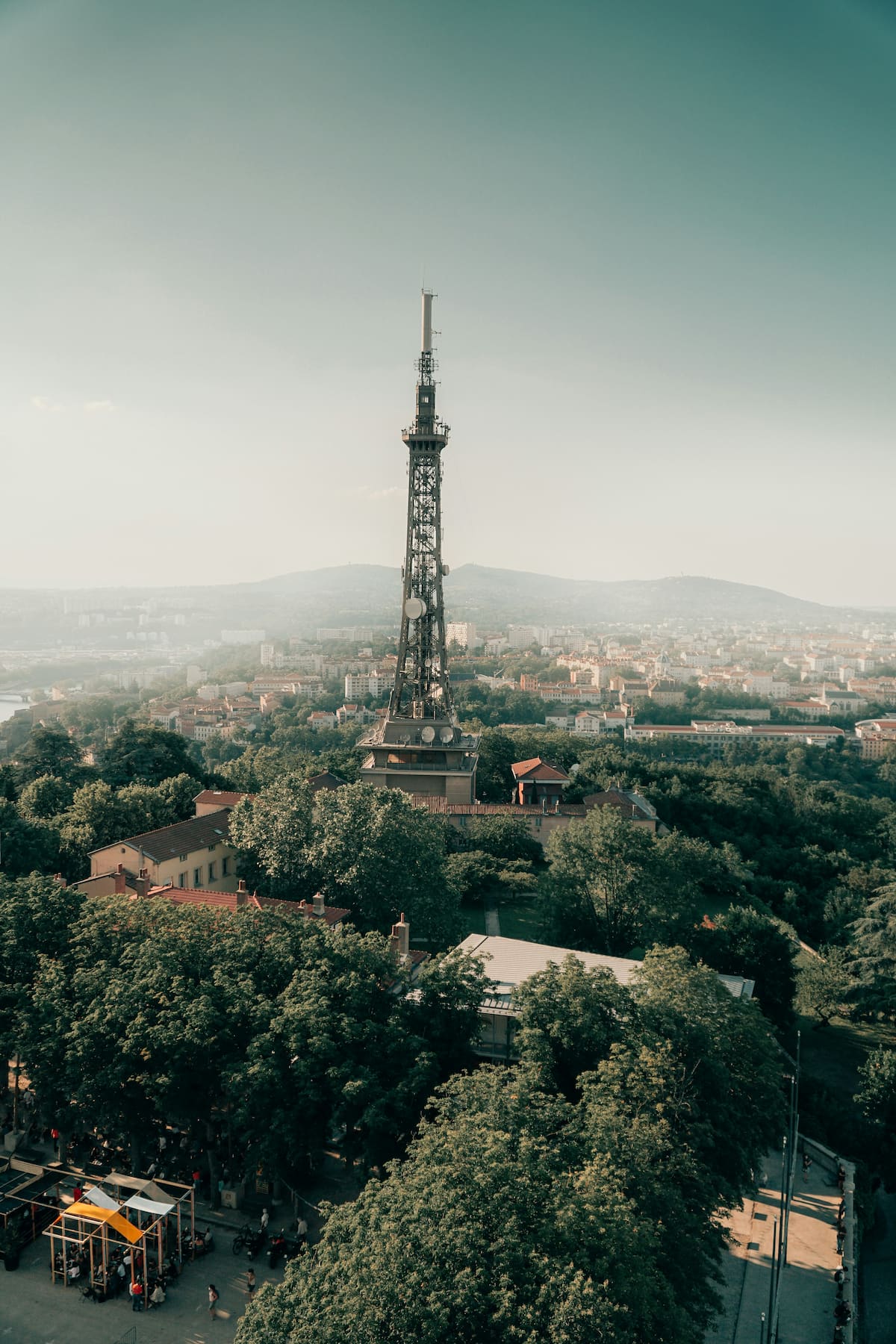The Fourvière Hill is a true gem overlooking the beautiful city of Lyon. Situated at the foot of the hill, our establishment serves as the perfect starting point to explore the cultural and architectural treasures that make Fourvière renowned. Whether you’re a history enthusiast, an architecture buff, or simply seeking breathtaking panoramas, you’ll be enchanted by the captivating atmosphere and timeless charm of this emblematic Lyon neighborhood.
Whether you’re visiting Lyon for leisure or business, let yourself be seduced by the authenticity and cultural richness of the Fourvière Hill. We are eager to welcome you and share with you the magic of this iconic place.

Get ready to be amazed by the splendor of the Basilica of Notre-Dame de Fourvière! Perched majestically atop the hill that bears its name, this architectural marvel will dazzle you upon arrival. With its shimmering domes seemingly touching the sky and ornate details telling ancient stories, the basilica is an open-air masterpiece that perfectly blends neo-Byzantine and Romanesque-Byzantine styles.
As you step inside, you’ll be captivated by the magnificence of its colorful frescoes, the soft glow of its stained glass windows, and the serene atmosphere that pervades.
Ah, the fascinating history of the Basilica of Notre-Dame de Fourvière is both rich and captivating. It all began in the 19th century when the city of Lyon was struck by a series of tragedies, including a cholera epidemic and a disastrous war. To thank the Virgin Mary for sparing them from these misfortunes, the Lyonnais decided to erect a monument worthy of her protection. Thus, the idea of building the basilica was born. Construction began in 1872 under the direction of architect Pierre Bossan. The construction was completed in 1896, but it was not until 1950 that it was consecrated by Pope Pius XII. Since then, the Basilica of Notre-Dame de Fourvière has become a true symbol of faith and devotion for the inhabitants of Lyon and visitors from around the world. It has stood the test of time, surviving wars and revolutions, but its splendor and mystical aura have never waned. Today, it continues to attract millions of pilgrims and tourists each year. It is undoubtedly one of the city’s must-see attractions. It is a symbol of the city, a source of inspiration and contemplation for all who have the chance to discover it.
Welcome to the heart of Lyon’s culture and history: the Roman Theater. Nestled at the foot of the Fourvière Hill, this Lyon landmark is one of the largest ancient theaters in Gaul. Its history dates back to the Roman era, when Lugdunum was a flourishing city, bustling with spectacles and entertainment. Built in the 1st century AD, the Roman Theater witnessed numerous historical events, hosting theatrical performances, gladiator battles, and even political speeches. Although centuries have passed, the magical atmosphere of this place remains intact, transporting visitors on a journey through Lyon’s history. Today, the Roman Theater continues to host performances and cultural events, perpetuating the millennial tradition of live entertainment in Lyon. A most enjoyable visit for anyone wishing to discover the city’s glorious past and immerse themselves in the enchanting atmosphere of antiquity.


Erected at the turn of the 20th century, the Metallic Tower of Fourvière is much more than just a monument. It is a symbol of innovation and modernity at the heart of Lyon. Designed by engineer Gustave Eiffel, famous for his eponymous Tower in Paris, this slender metal structure rises majestically on the Fourvière Hill, offering an emblematic silhouette that stands out against the Lyon skyline. Originally built to serve as a telephone transmission tower, the Metallic Tower of Fourvière quickly won the hearts of Lyonnais and visitors alike with its unique beauty and architectural boldness. Although less imposing than its famous Parisian counterpart, it is no less impressive, offering breathtaking views of the city and its surroundings from its summit. Today, the Metallic Tower of Fourvière has become one of Lyon’s most iconic symbols, bearing witness to the ingenuity and creative genius of its designers. Whether to admire the spectacular view from its belvedere or simply contemplate its elegant silhouette blending into the urban landscape, a visit to the Metallic Tower of Fourvière is a must for anyone wishing to discover the city from a different perspective.

At the top of the Fourvière Hill, two natural treasures face each other, offering visitors an enchanted experience in the heart of Lyon. The Heights Park, a vast expanse of greenery punctuated by winding paths and majestic trees, invites strolling and contemplation. This haven of peace offers an escape from the urban hustle and bustle, where the chirping of birds and the whispering of the wind in the foliage are the only melodies to listen to. Just next door, the Garden of Curiosities unveils its botanical and artistic treasures in an exceptional green setting. Created in the 17th century, this unusual garden charms with its mysterious atmosphere and eclectic mix of exotic plants, surprising sculptures, and picturesque viewpoints. Every corner holds its share of discoveries and wonders, inviting wandering and exploration. A contemplative walk in the lush nature of the Heights Park or a plunge into the fascinating and unusual universe of the Garden of Curiosities, whichever you choose, these two natural treasures offer an enchanted getaway for visitors seeking a change of scenery and discovery. An invitation to contemplation and reverie, where time seems to stand still and the beauty of nature reveals itself in all its splendor.
To get to Fourvière, several options are available to visitors: